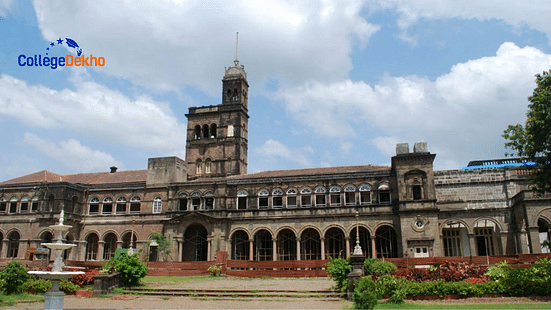
Difference Between HS, AI, OS, and GO Quota:
In JoSAA counselling, ‘quota’ indicates a certain number or percentage of seats reserved in the participating IITs, NITs, IIITs, and GFTIs, primarily based on the student’s category (General/ OBC/ SC/ ST etc.) and state of eligibility. JoSAA quotas are classified into four types – HS, AI, OS, and GO quota. This article will help you understand the major difference between HS and AI quota, and difference between HS and OS quota!
Also Check -
JoSAA Quotas - HS and AI Quota and Quota-wise Seat Distribution
What are the Different Types of Quota in JoSAA?
The Joint Seat Allocation Authority offers the following types of quotas for seat allotment in the government institutions, including IITs, NITs, IIITs, GFTIs, and IIESTs.
Home State (HS) Quota: The HS quota is for students applying in institutes that are located in the same state they belong from.
All India (AI) Quota: The AI quota is applicable to all students participating in JoSAA counselling from across the country, regardless of their state of residence.
Other State (OS) Quota: The OS quota applies to students whose state of eligibility is not the same as the location of the institute. For example, if a student from the Tamil Nadu region applies to the college in the West Bengal region, then it's considered an OS quota. The seats of up to 50% have been allotted to OS quota students.
Goa State (GO) Quota: The GO quota applies to students belonging to the state of Goa. It indicates a sub-quota within the Home State quota. This is particularly for NIT Goa where 40% of the total seats are reserved for students who are domicile of the state. The remaining 10% of the HS quota seats is reserved for students from the Union Territories of Daman & Diu, Dadar & Nagar Haveli, and Lakshadweep.
Difference between HS and AI Quota in JoSAA
Here are the major differences between HS and AI quota in JoSAA:
Home State (HS) Quota | All India (AI) Quota |
|---|---|
Seats are reserved for those students who have completed their Class 11th and 12th education from the same state where the institute is located. | Seats are open to students taking part in the admission from all over India. |
50% of the total seats in NITs and some GFTIs are allocated to students under the HS quota. However, no such reservations are accepted in IITs and IIITs. | Seats are only allocated based on the student’s All India Rank, regardless of the domicile state. |
The JoSAA cutoff under HS quota seats are relatively lower, particularly for less popular institutes or branches. | Cutoff under AI quota tends to be higher due to immense competition among students from all over India. |
Difference between HS and OS Quota in JoSAA
Let’s look at the major difference between HS & OS quota in JoSAA:
Home State (HS) Quota | Other State (OS) Quota |
|---|---|
Seats are reserved for students who are residents of the same state as that of the institute. | Seats are allocated to students from states other than the location of the institute. |
50% of the total seats are reserved for HS quota students in the NITs. | Remaining seats are reserved for students domiciled in other states based on AIR. |
Cutoff ranks tend to be lower compared to OS quota for the same branch and institute. | Cutoff ranks may be higher due to more fierce competition among students from across the country. |
What are Supernumerary Seats in JoSAA?
To promote gender diversity, supernumerary seats are allotted specifically for female students, ensuring a minimum of 20% female enrollment across various IITs and NITs, IIEST, and some IIITs. These seats fall under the "Female-Only" pool category, completely distinct from the already existing "Gender-Neutral" section. A vacant seat in the Female-Only pool that's left unfilled won't be reserved for any other non-female students. Also, it's altogether a varied category when compared to a reservation pool.
Meanwhile, some educational institutes provide supernumerary seats reserved for foreign residents, NRIs, and students coming from certain Union Territories to nurture cultural diversity among students. The total quantity of supernumerary seats reserved under each IIT college for foreign nationals is limited to around 10% of the overall seats available in the respective IIT, as per each degree program.
Understanding the different types of quota in JoSAA and the common difference between HS and AI quota or difference between HS and OS quota can help you get admitted into the preferred college based on your choice. We wish every aspirant a promising and successful career ahead!
JoSAA Related Articles
| JoSAA Round 2 IIT Cutoff 2025 | JoSAA Round 2 NIT Cutoff 2025 |
|---|---|
| JoSAA Round 2 IIIT Cutoff 2025 | - |
If you have further queries regarding admission to top private engineering colleges in India , you can write to hello@collegedekho.com or call our toll free number 18005729877, or simply fill out our Common Application Form on the website.
Are you feeling lost and unsure about what career path to take after completing 12th standard?
Say goodbye to confusion and hello to a bright future!

FAQs
Yes, you can! For more details, feel free to check https://csab.nic.in.
Every college in JoSAA provides a fixed 5% reservation concession for women candidates. The women entrants can register through the All India Level or the Women's Quota Model.
As required by the AICTE (All India Council for Technical Education), New Delhi, the prospective JEE 2025 exam candidates must complete the 10+2 academic system, where the 12th qualifying exam should contain Mathematics and Physics as mandatory disciplines from an accredited educational board with at least 45% of the overall score earned for the General/Unreserved (UR) class and 40% in each of the 3 fundamental subjects for candidates who belong to the SC, ST, and OBC groups. Applicants looking to get into engineering must score atleast 50 to 65% in their JEE Advanced exam to enter JoSAA counselling 2025.
Was this article helpful?





















Similar Articles
GATE CS Question Paper Difficulty Level Trends: A detailed analysis
JEE Main 2026 Chemistry High Priority and Low Priority Chapters
Are JEE Main Study Groups Worth It? Detailed Pros and Cons for 2026 Aspirants
How to Prioritize Physics Chapters Based on JEE Main 2026 Weightage and Difficulty
GATE 2026 Mechanical Engineering Expected No. of Questions Topic-Wise
GATE 2026 Civil Engineering Expected No. of Questions Topic-Wise